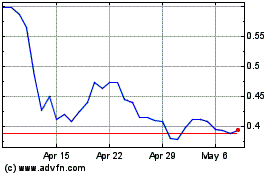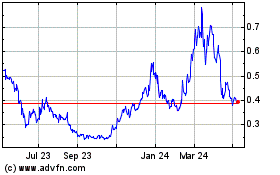Bitcoin Plunges Below $40 As Russia Has Reportedly Given Its Forces Order To Attack Ukraine
21 February 2022 - 9:26PM
NEWSBTC
Bitcoin plunges below $40,000 in the early hours of the weekend and
proceeded to backpedal in the face of escalating tensions on the
Ukraine-Russia border, not to mention ongoing inflationary unease.
At the time of writing, the world’s most popular cryptocurrency was
trading near $38,700, down 3.4% in the previous 24 hours and at its
lowest level since February 3. Bitcoin had been holding solidly
above $40,000 in recent days, however Friday’s decline was the
first time since February 4 that it fell back into the $30,000
region. Ether and nearly all other major cryptocurrencies were down
as well. A probable misuse of OpenSea, the leading NFT platform,
may have shooed away investors even further away from
cryptocurrency. Related Article | Bitcoin Falls As Russia-Ukraine
Tensions Escalate Bitcoin Plunges: Lots Of Factors At Play
Bitcoin’s price has been slowing in recent weeks following Federal
Reserve Chairman Jerome Powell’s announcement that the central bank
will begin hiking rates at its March meeting in response to
persistent inflationary pressures. More broadly, January’s
significant BTC decline occurred following the stock market’s worst
month since March 2020 and the issuance of the Fed’s long-awaited
research on the possibility of a government-issued digital
currency. All of these concerns may have prompted investors to
“reduce their exposure to crypto,” according to Joe DiPasquale,
chief executive officer of fund manager BitBull Capital. Prior to
Feb. 4, Bitcoin had been unable to break through the $40,000
barrier since January 20. On Jan. 24, Bitcoin fell below $34,000
for the first time since July of last year. BTC total market cap at
$736.97 billion in the daily chart | Source: TradingView.com
Russian Forces Given Green Light To Invade? The price decline
occurred as US intelligence revealed Russia is on the verge of
attacking Ukraine. On Sunday, US Secretary of State Antony Blinken
stated that everything “appears to be taking place” in the run-up
to the invasion. Russian forces gathered near Ukraine’s border have
received orders to invade, according to The Guardian on Monday,
citing information from U.S. intelligence agencies. Elsewhere, Yuan
Shows Strength As last week in Asia came to a conclusion, Chinese
official media announced that the yuan, China’s currency, was
comfortably flexing its muscles. According to China’s media, the
value of RMB payments climbed by nearly 11% in January, citing data
from SWIFT, a Belgian cooperative society that acts as an
intermediate and executor of financial transactions between banks
from around the world. Related Article | Bitcoin Slows Plunge Below
$40K, What’s The Best Point For A Pullback? As a result of the
unexpectedly sluggish performance of the digital yuan during the
Winter Olympics, RMB payments rose more than 10% versus December.
The RMB now accounts for 3.3% of all global transactions, up from
2% in November. On the other hand, the British pound accounts for
6.2% of global commerce. … But The US Dollar Dominates
Interestingly, when it comes to digital currencies, the US dollar
continues to reign supreme. Chainalysis stated in 2020 that $50
billion in cash went out of China in cryptocurrency, the most of it
in dollar-pegged tether. “Despite the United States’ declining
share of global GDP, the dollar continues to dominate, most notably
in the digital environment,” Bloomberg commodity strategist Mike
McGlone stated in April last year. Meanwhile, momentum indicators
remain negative, showing that selling pressure has been constant
over the last month for Bitcoin. BTC failed to break above its
40-week moving average of $45,724, indicating a bearish bias.
Featured image from NewsXPres.com, chart from TradingView.com
Secret (COIN:SCRTUSD)
Historical Stock Chart
From Dec 2024 to Jan 2025

Secret (COIN:SCRTUSD)
Historical Stock Chart
From Jan 2024 to Jan 2025

Real-Time news about Secret (Cryptocurrency): 0 recent articles
More Secret News Articles